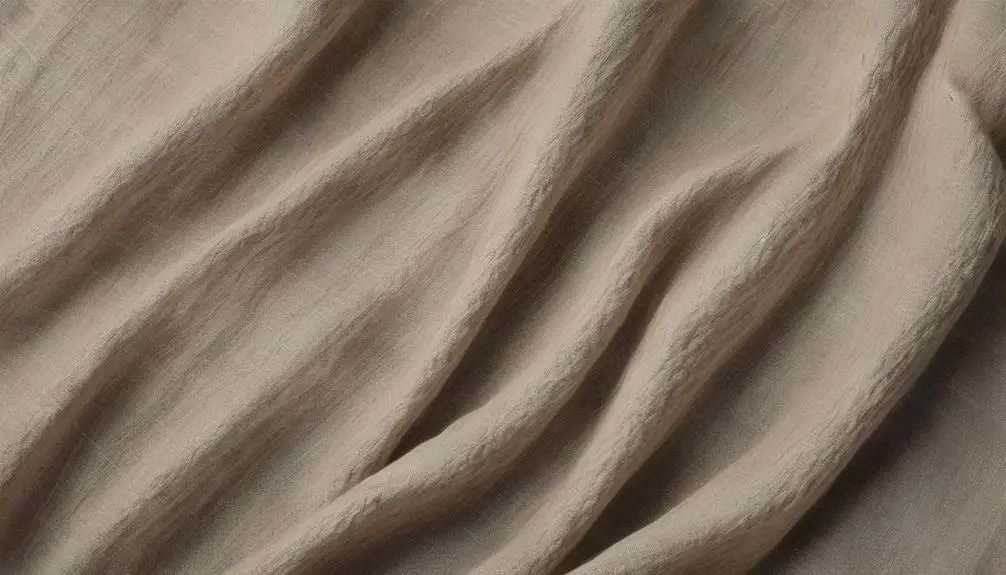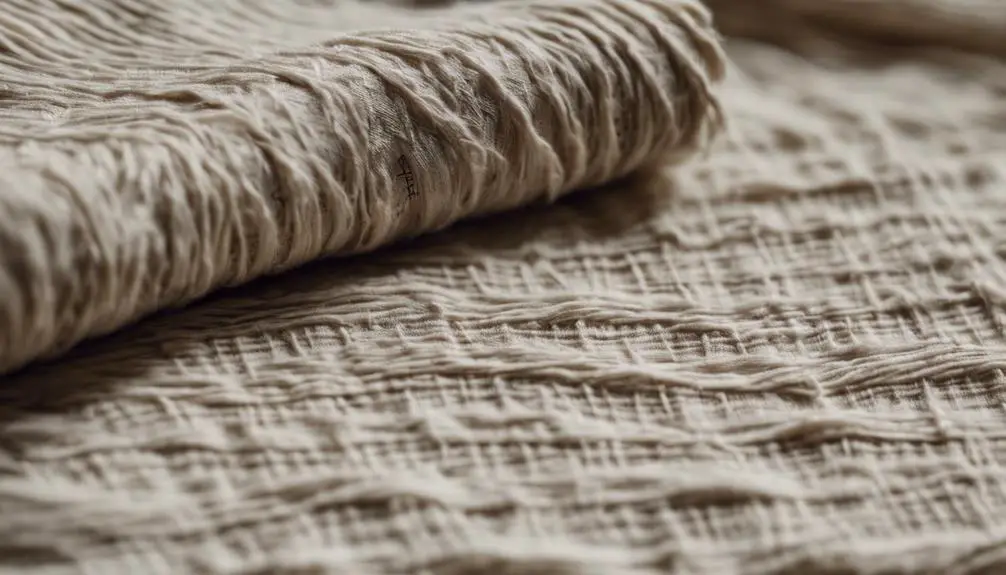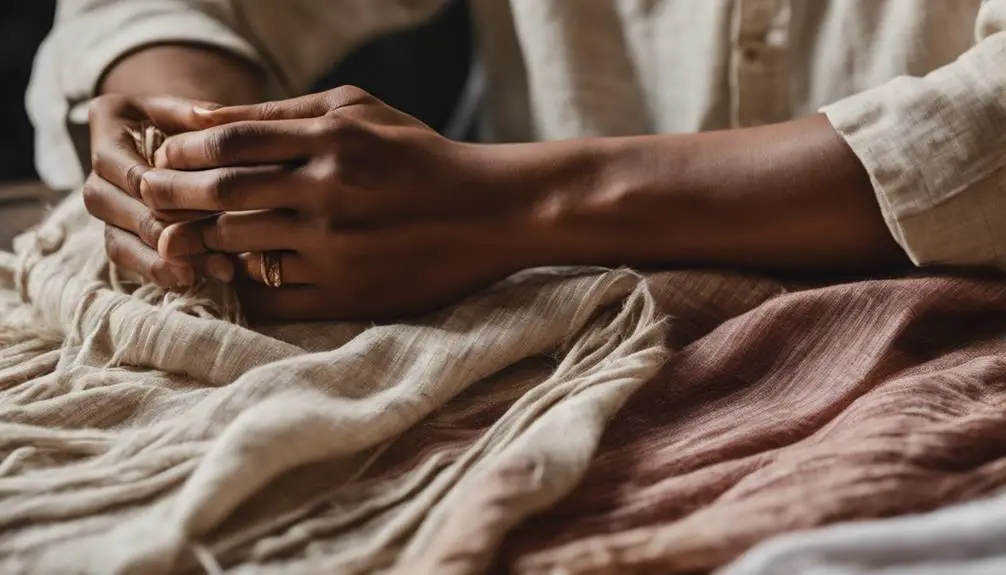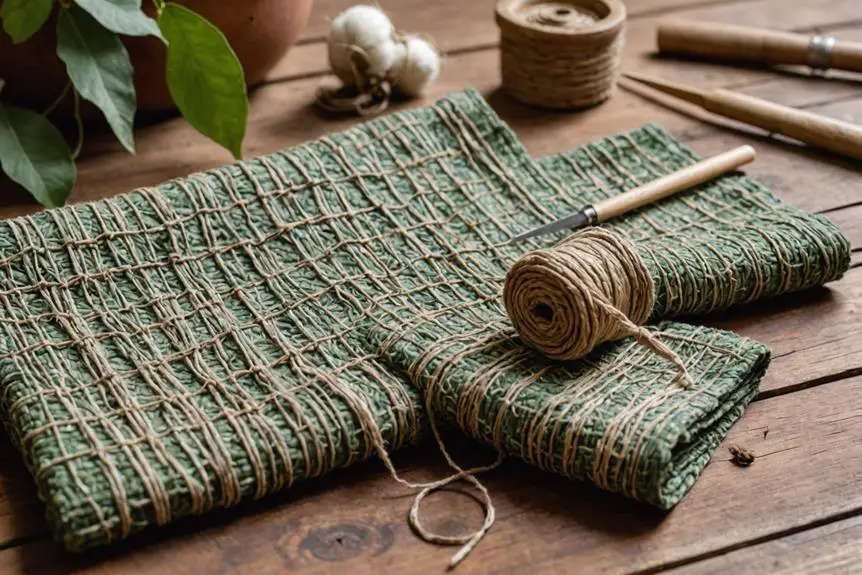When you're trying to identify Khadi fabric, it's important to pay attention to its unique characteristics. You'll notice the coarse texture and small irregularities that signify its hand-spun, hand-woven origins. Look for the Khadi Mark certification; it's a reliable indicator of authenticity. Also, try the twist test—if the threads tighten, you've likely got genuine Khadi. But there's more to uncover about how to differentiate Khadi from other fabrics and the sustainable practices behind it. What else should you consider to guarantee you're making an informed choice?
Understanding Khadi Fabric

When it comes to understanding Khadi fabric, you'll find it's more than just a textile—it's a reflection of traditional craftsmanship. This hand-spun, hand-woven fabric is made primarily from natural fibers like cotton, silk, or wool. It's a beautiful blend of art and sustainability! Have you ever wondered what makes Khadi so unique?
Authentic Khadi is certified by the Khadi and Village Industries Commission (KVIC), which means it meets specific production standards. When you see the KVIC logo, you can feel good knowing you're buying something that supports skilled artisans. But here's the fun part: the texture of Khadi isn't perfectly smooth. You'll notice it's often coarse and uneven, with small irregularities called slubs. These quirks add character and charm, don't you think?
Now, let's talk about the hard work behind this fabric. Producing Khadi is labor-intensive, with artisans spending up to five months turning raw cotton into beautiful cloth. Can you imagine the dedication it takes? Plus, only about 33% of raw cotton is usable!
Key Features of Khadi
Khadi fabric stands out with its distinct coarse and uneven texture, a result of the hand-spinning and hand-weaving techniques used in its production. If you're curious about what makes Khadi so special, let's explore its key features!
- Texture: The fabric's rough feel and small irregularities, or slubs, highlight its hand-spun and hand-woven nature. You won't find any boring, uniform surfaces here!
- Breathability: With its soft and porous qualities, Khadi allows air to flow, making it perfect for warm weather. Who doesn't love a fabric that keeps you cool?
- Density: When you hold Khadi up to the light, you'll notice slight differences in density and transparency. This unique characteristic sets it apart from smoother fabrics.
- Authenticity: Authentic Khadi comes with the Khadi Mark certification from the KVIC, ensuring you're getting the real deal. No fakes allowed!
Khadi's minimalistic designs and earthy tones reflect simplicity and sustainability. It's like wearing a piece of history! So next time you touch Khadi, remember you're experiencing a fabric that's not just about style but also about authenticity and craftsmanship. Isn't that cool? Whether you're looking for comfort or a conversation starter, Khadi's got you covered! So, what are you waiting for? Go explore the wonderful world of Khadi!
Certification and Authenticity

To verify you're getting genuine Khadi fabric, it's essential to look for the Khadi Mark certification issued by the Khadi and Village Industries Commission (KVIC). This nifty little certification guarantees the fabric is truly hand-spun and hand-woven, just like it should be. Who wants a fake, right?
When you're out shopping, keep an eye out for the KVIC logo. It's like a badge of honor for Khadi products! You might also spot batch numbers on the label, which help trace the fabric back to its production process. This traceability is super important for confirming authenticity. It's like knowing the backstory of your favorite band—makes it feel more special!
Don't forget to check the detailed information labels. These labels not only confirm the product's authenticity but also highlight the quality of what you're buying. After all, you want something that lasts, don't you?
To up your chances of snagging the real deal, buy from certified stores or reputable retailers that specialize in Khadi. Think of it as shopping with a trusted friend who knows what's good.
Differentiating Khadi From Handloom
Understanding the differences between Khadi and handloom fabrics is essential for making informed choices. You don't want to end up with something that doesn't meet your needs, right? Let's break it down. Here's how you can tell them apart:
- Yarn Source: Khadi is made from hand-spun yarn, while handloom fabrics can come from both hand-spun and machine-spun yarns.
- Texture: Khadi has a coarser, uneven texture due to that hand-spinning, whereas handloom fabrics usually feel smoother and more uniform.
- Twist Test: Want to know a quick trick? Do the twist test! When you twist Khadi, the threads tighten. With handloom fabric, they tend to loosen up.
- Transparency and Density: Hold each fabric against the light. You'll notice that Khadi has slight transparency and varying density, while handloom fabrics look more uniformly dense and less transparent.
Oh, and don't forget about authenticity! Look for the KVIC logo and batch numbers on Khadi. You won't find these on handloom fabrics. So, next time you're shopping, keep these tips in mind. You'll impress your friends and maybe even find the perfect fabric for your next project! Isn't that exciting? Remember, knowing these differences helps you choose the right fabric. Happy fabric hunting!
Sustainable and Ethical Practices

When you choose Khadi fabric, you're not just selecting a textile—you're supporting a sustainable and ethical industry. How cool is that? Khadi production relies on manual processes, which means it uses way less energy than those big, industrial factories. This helps reduce the carbon footprint, making it a win for our planet!
By sourcing cotton directly from local farmers and practicing eco-friendly methods, Khadi promotes sustainable agriculture and fair trade principles. You can feel good knowing that your purchase helps rural economies thrive. Plus, when you see the Khadi Mark certification, you know you're getting authentic hand-spun and hand-woven fabrics. It's like a badge of honor for ethical sourcing!
And let's talk about colors—Khadi uses natural dyes, which not only looks great but also cuts down on the nasty chemicals that typically pollute our environment. This emphasis on traditional craftsmanship preserves cultural heritage while empowering local artisans. When you buy Khadi, you're helping these talented folks gain economic independence and build their communities.
Frequently Asked Questions
How to Recognize Khadi Fabric?
When you're trying to recognize Khadi fabric, remember its rich history and sustainable production. Look for unique Khadi weaving patterns and the vibrant dyes used by skilled artisans. You might notice different Khadi varieties, each with its own charm! Feel the softness—it's all about comfort. Plus, wearing Khadi supports local artisans and eco-friendliness. So, next time you shop, keep those benefits in mind! Isn't it great to wear something so meaningful?
Which Fabric Is Khadi?
So, which fabric is khadi? Well, it's that amazing handwoven cloth with a rich history tied to Khadi production and sustainability! You'll love its unique texture from Khadi weaving, made by skilled artisans. Plus, it's eco-friendly, supporting local markets and communities. Khadi fashion's super versatile, perfect for casual wear or more formal styles. With natural dyes and breathable qualities, its benefits are endless! Isn't it cool how it combines tradition and modern style?
What Are the Characteristics of Khadi Cotton?
Khadi cotton's got some amazing characteristics! You'll love its breathable texture and earthy colors, perfect for any outfit. Plus, it's all about Khadi sustainability, right? Made by skilled Khadi artisans, this fabric reflects rich Khadi history and tradition. The unique Khadi weaving process gives it that charming, uneven look. And those natural Khadi dyes? A total win for your wardrobe! Just remember, proper Khadi maintenance keeps it looking great for years! Isn't that cool?
What Are the Features of Khadi?
Khadi's got a rich history, rooted in traditional craftsmanship. When you check out Khadi weaving, you'll notice its unique texture and earthy colors. There are various Khadi types, each with its own charm. The benefits? It's breathable, eco-friendly, and supports local artisans! Plus, those vibrant Khadi dyes make it even more fun! Caring for Khadi is easy too. Isn't it great to wear something stylish that also promotes sustainability?
Conclusion
So, next time you're shopping for fabric, remember these tips to spot authentic Khadi! Feel the texture, check for the Khadi Mark, and don't forget that twist test! You'll not only score some unique threads, but you'll also support sustainable and ethical practices. How cool is that? So go ahead, rock that Khadi style, and wear your values proudly! After all, who doesn't love looking good while doing good? Happy fabric hunting!




